Zero Barriers in STEM Education
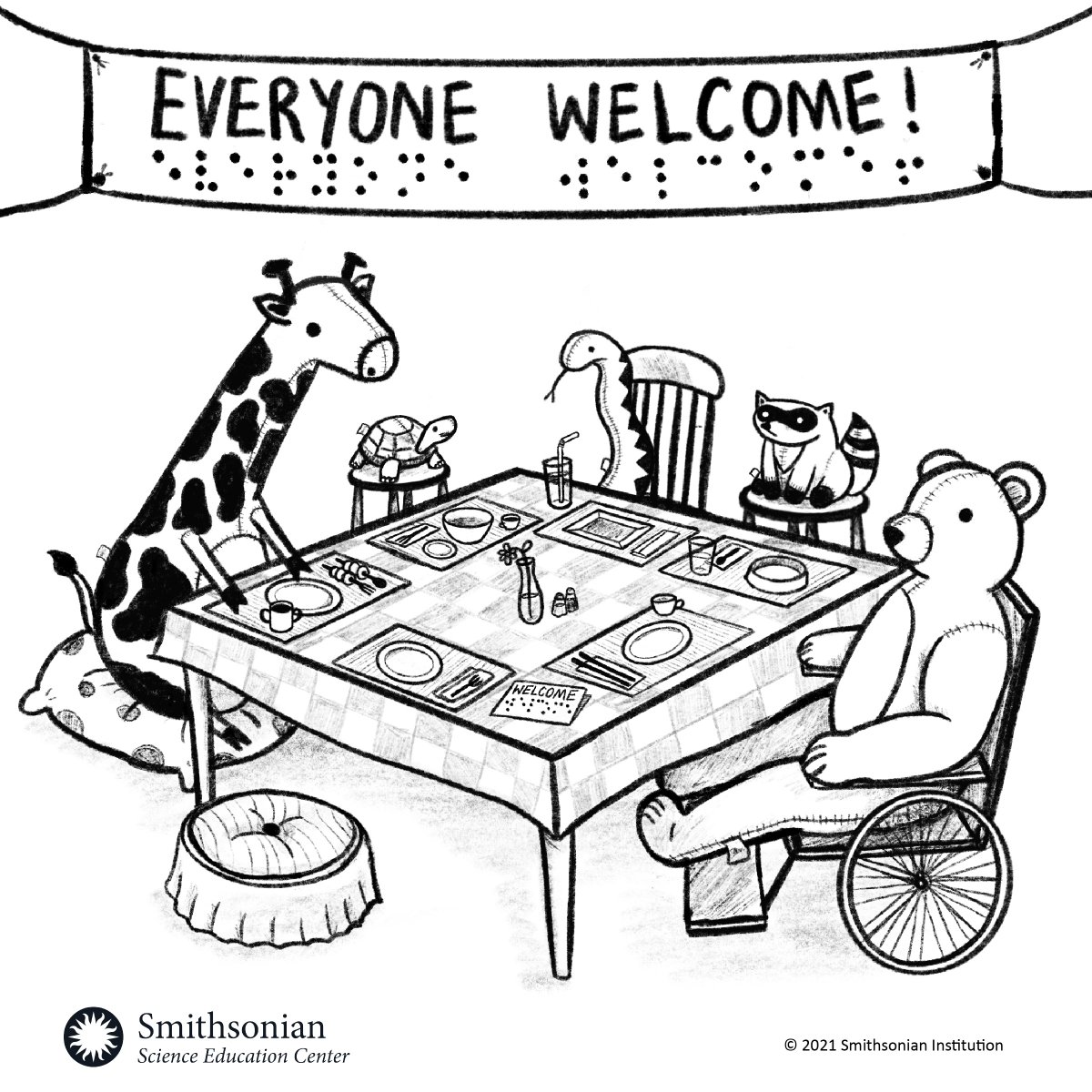
In 2015, there were nearly 40 million Americans with a disability, representing 12.6% of the civilian non-institutionalized population (Pew Research, 2017). Yet, individuals with disabilities are underrepresented in STEM fields (NSF, 2017). In addition, little research exists regarding how students with disabilities learn science concepts (Andersen & Nash, 2016), even though science content linked to grade-level general education science standards has been mandated for these students since 2004.
In a desire to respond to this challenge, the Smithsonian Science Education Center established The Zero Barriers in STEM Education: Accessibility and Inclusion initiative. This initiative, initially funded by General Motors and Smithsonian Accessibility Innovation Funds, offered teachers in DC Public Schools professional learning opportunities, high-quality science content and materials to strengthen their ability to use inclusive strategies in their classrooms – ensuring that all learners along the continuum of human ability have robust STEM experiences. Participating teachers initiated change in their schools by leading a team of their peers in identifying a problem of practice related to accessibility in STEM learning.
In the pilot year, Smithsonian Science Education Center (SSEC) partnered with District of Columbia Public Schools (DCPS) to pilot the Zero Barriers in STEM Education initiative. Participating teacher leaders received Smithsonian Science curriculum and professional development to support them in integrating universal design for learning principles into their STEM instruction and classroom culture.
About The Zero Barriers in STEM Education: Accessibility and Inclusion Program
Starting in 2022, The Smithsonian Science Education Center extended an invitation to educators across the nation to apply to participate in the Zero Barriers in STEM Education Accessibility and Inclusion Program. The program convenes teams of educators representing schools, districts, and state education agencies across the US together for an education summit, to develop logic models that use principles of universal design for learning to address a problem of practice related to accessible and inclusive STEM programs and school culture within their context for students with disabilities. The program also provides mid-year professional development to educators selected for the program.
The Summit: Over the course of 2 ½ days, teams, and their assigned mentor, work together to identify their problem and develop their plan of action to be implemented for 18 months following the summit. Developing a logic model at the summit is the first of many steps that educators take to serve as change agents in their organizations, when participating in this program. As team members build their capacity to be leaders and initiate change in their educational ecosystem, they come to understand the importance of engaging all stakeholders in decision-making processes, especially when addressing systemic issues. To that end, teams must also be comprised of a diverse group of individuals that operate within different areas of the organization, that include a teacher or administrator who has expertise in working with students with disabilities.
Mid-Year Professional Learning: Following the Summit, selected summit teams, and their mentors, attend a virtual professional development a few months after they begin implementing their logic models. The workshops provided focus on accessibility and other topics relevant to expanding STEM opportunities for students with disabilities.
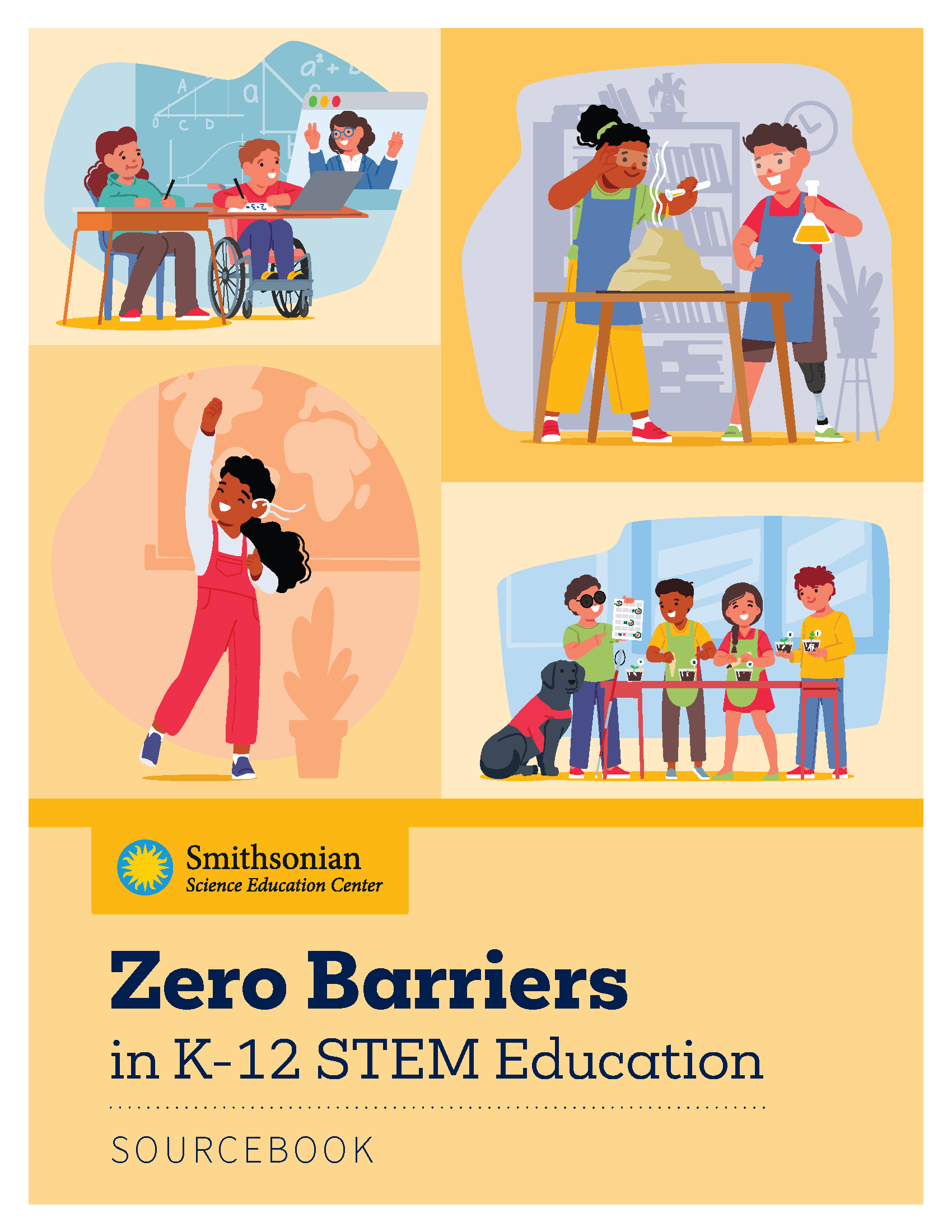
Zero Barriers in STEM Education Advisory Committee
Integral to the implementation of the initiative is the 17-member advisory committee, which includes experts and thought leaders from PK-12 and postsecondary education, corporations, and nonprofit organizations. Committee members provided in-field expertise that contributed to the creation of the Zero Barriers in STEM Education Accessibility and Inclusion Workbook, a list of nine discipline agnostic Universal Design for Learning (UDL) based strategies. The strategies are straightforward and serve as a cornerstone of this initiative as teachers seek to adopt strategies within the workbook into their
Zero Barriers in STEM Education Accessibility and Inclusion Workbook
Created in collaboration with the Advisory Committee, the Zero Barriers in STEM Education Accessibility and Inclusion Workbook provides strategies on ways to integrate inclusive/Universal Design for Learning practices into the K-12 STEM classroom. The goal is to empower teachers to structure lessons to address the needs of all students, including those with disabilities. The workbook’s strategies which can be implemented into new or existing lessons to make them more accessible and helps educators create a culture of inclusivity in their classroom.
This document is intended to be accessible to all users, including screen reader users. Features included are:
- Bookmarks
- Logical reading order
- Proper tagging, including headings, paragraph text, lists, and tables
- Figures with alt-text
- Primary language set to English

Zero Barriers in STEM Education Wednesday Webinars
-
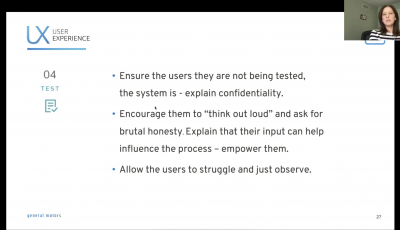 Webcast
WebcastDeveloping User Confidence & Engagement with New Technologies
-
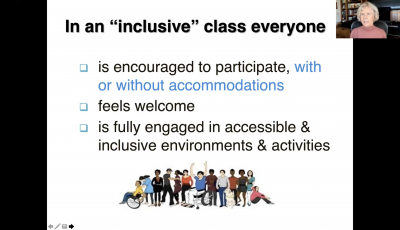 Webcast
WebcastPromising Practices for Online Learning
-
 Webcast
WebcastPanel: Transforming STEM Education and Industry through an Accessibility Lens
-
 Webcast
WebcastDCPS Resources and Strategic Plan to Address More Accessible and Inclusive Learning
-
 Webcast
WebcastZero Barriers in STEM Education Summit: Keynote Address & Closing Remarks
-
 Webcast
WebcastIDEAS in STEM: Building Positive STEM Identities in Students with Disabilities
-
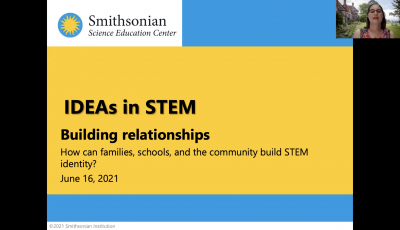 Webcast
WebcastIDEAS in STEM: Building Relationships
References
- Andersen, L.., Nash, B. (2016) Making Science Accessible to Students with Significant Cognitive Disabilities. Journal of Science Education for Students with Disabilities, 19 (1). Retrieved August 5, 2020 from, https://scholarworks.rit.edu/jsesd/vol19/iss1/3.
- Anderson, M., & Perrin, A. (2017). Disabled Americans are less likely to use technology. Pew Research Center. Retrieved August 12, 2020 from, https://www.pewresearch.org/fact-tank/2017/04/07/disabled-americans-are-less-likely-to-use-technology/.
- Dossick, A. (2022). A Case Study Exploring How the Zero Barriers in STEM Education Professional Development Program Affects Attitudes and Confidence Toward Teaching STEM Content to Students With Disabilities. Virginia Commonwealth University: Dissertation. Available: https://scholarscompass.vcu.edu/etd/7076/
- National Science Foundation, National Center for Science and Engineering Statistics. 2017. Women, Minorities, and Persons with Disabilities in Science and Engineering: 2017. Special Report NSF 17-310. Arlington, VA. Available at https://nsf.gov/statistics/wmpd/.